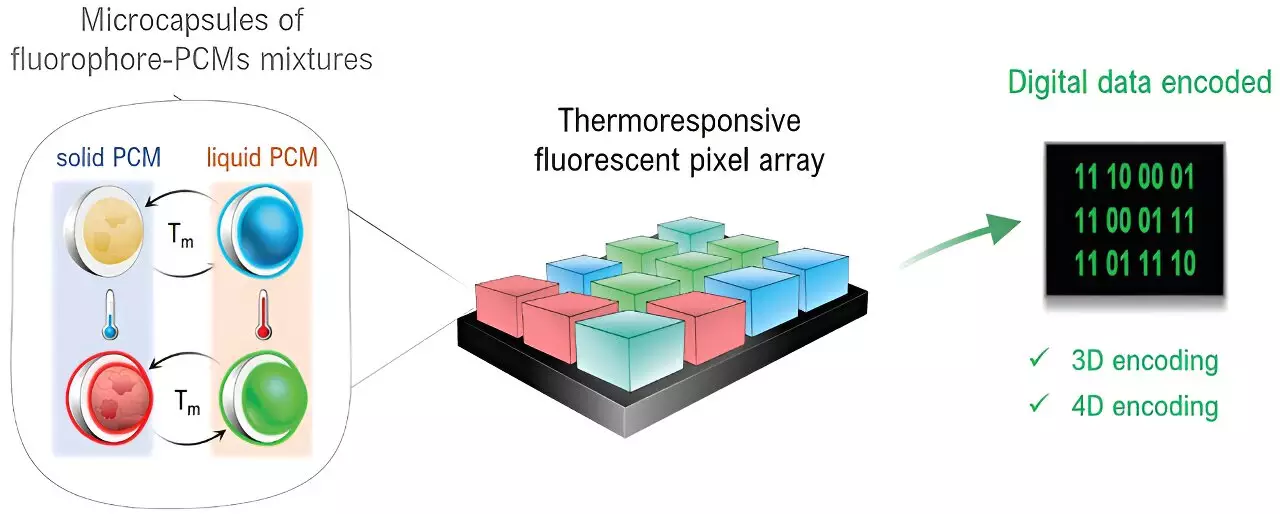In the evolving landscape of data storage and encryption, a groundbreaking advancement has emerged from a collaboration between scientists at the ICN2 Nanostructured Functional Materials Group and the Chemistry Department of the Autonomous University of Barcelona (UAB). Led by notable researchers such as Dr. Claudio Roscini and Prof. Daniel Ruiz-Molina, this innovation introduces a sophisticated digital encoding system that significantly enhances data security and efficiency. Their findings were published in the esteemed journal Advanced Functional Materials, marking a pivotal moment for the field.
At the heart of this innovation is a cutting-edge system that utilizes microcapsules filled with distinct luminescent dyes combined with phase change materials like paraffins. These materials are known for their unique thermal properties, particularly their ability to absorb and release heat in response to temperature changes. The researchers ingeniously paired the optical characteristics of fluorescent dyes with the thermal dynamics of phase change materials to craft a novel pixel system capable of encoding information in a multi-dimensional format.
The encoding mechanism devised by the research team allows for enhanced data storage capabilities that operate on two primary dimensions—spatial positioning akin to traditional QR codes (2D) and the luminescent colors emitted by the microcapsules (3D). To expand their system even further, the researchers introduced a fourth dimension, controlling data encoding based on the thermal response of the materials. This multifaceted approach not only broadens the potential for data storage density but also offers a novel platform for advanced encryption techniques.
The implications of this research are vast, presenting opportunities in various fields, particularly cybersecurity and anti-counterfeiting. As the world increasingly relies on digital transactions and communications, the need for robust security measures has become paramount. This new encoding technology offers a low-cost and efficient solution to the pressing demands for high-density data storage and improved cryptographic systems. The ability to leverage not only color variations but also thermal responses for data encoding paves the way for an unprecedented level of complexity in data security.
The innovative research spearheaded by the collaborative efforts of Dr. Roscini, Prof. Ruiz-Molina, and their teams represents a significant leap forward in our approach to digital data encoding and storage. By harnessing the unique properties of microcapsules filled with luminescent dyes and phase change materials, they have created a versatile, efficient, and economically viable system that promises enhanced security and storage capabilities. As the technological landscape continues to evolve, the potential applications of this research could redefine how we think about data management and protection in an increasingly digital world.

